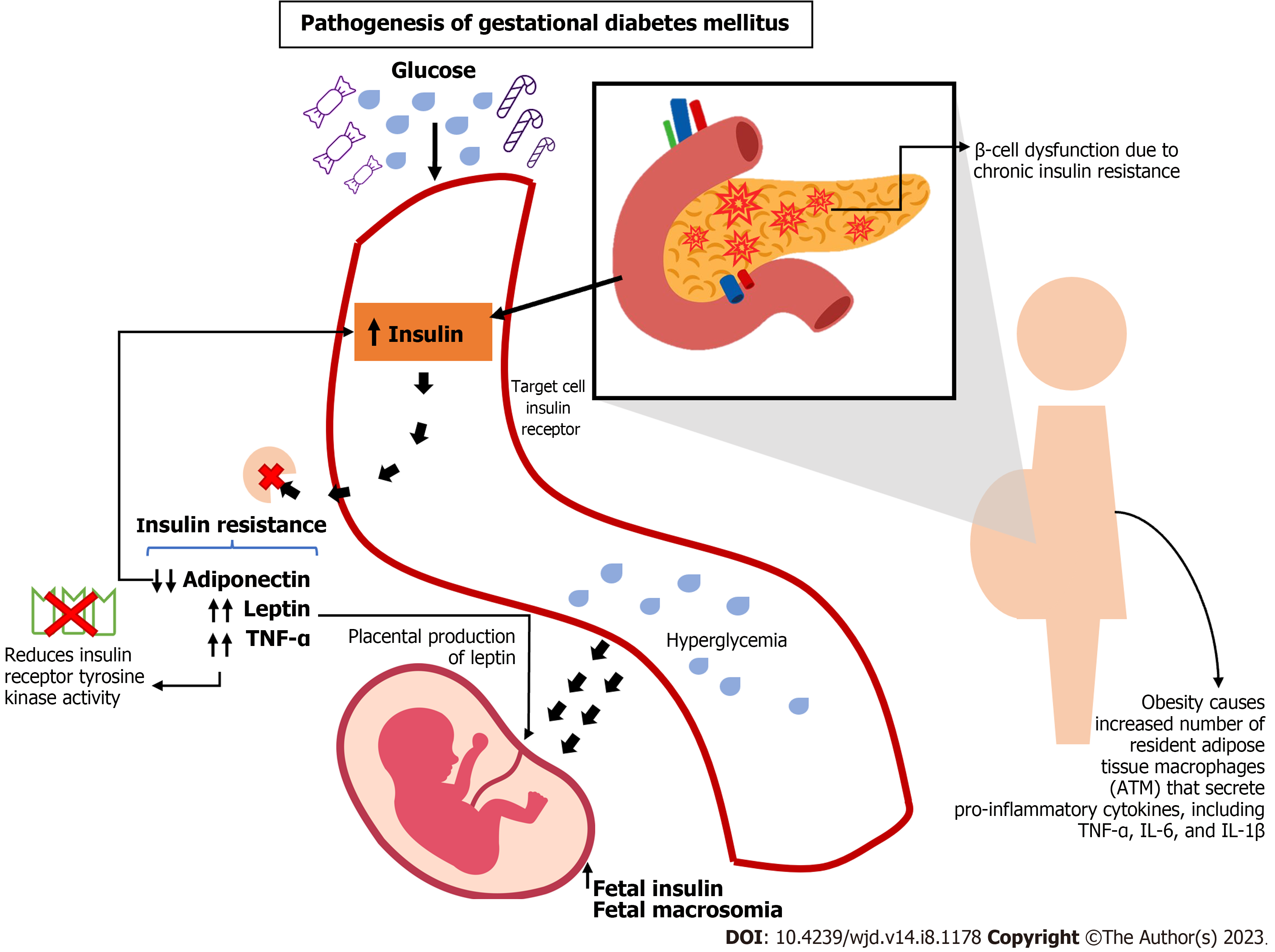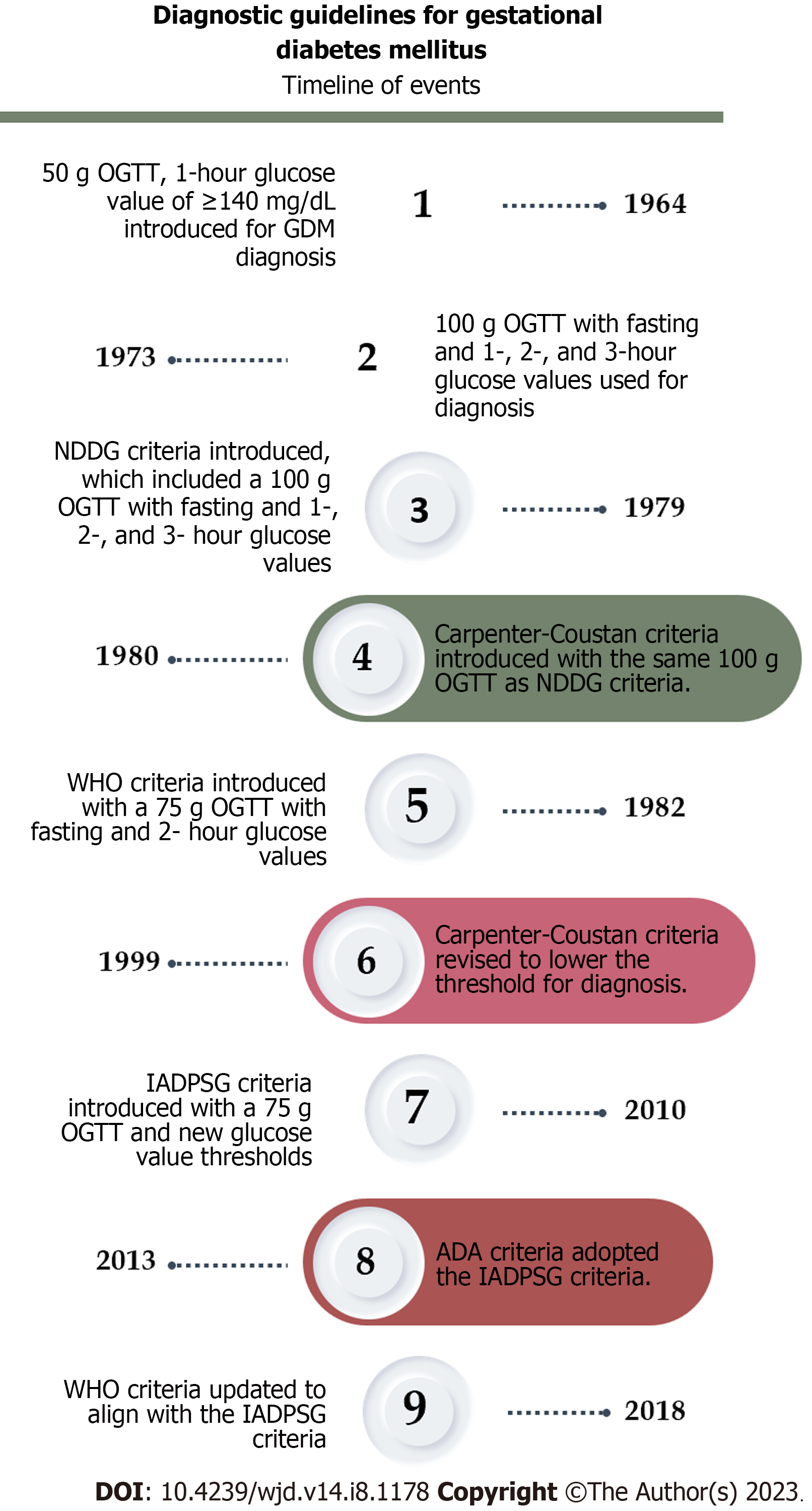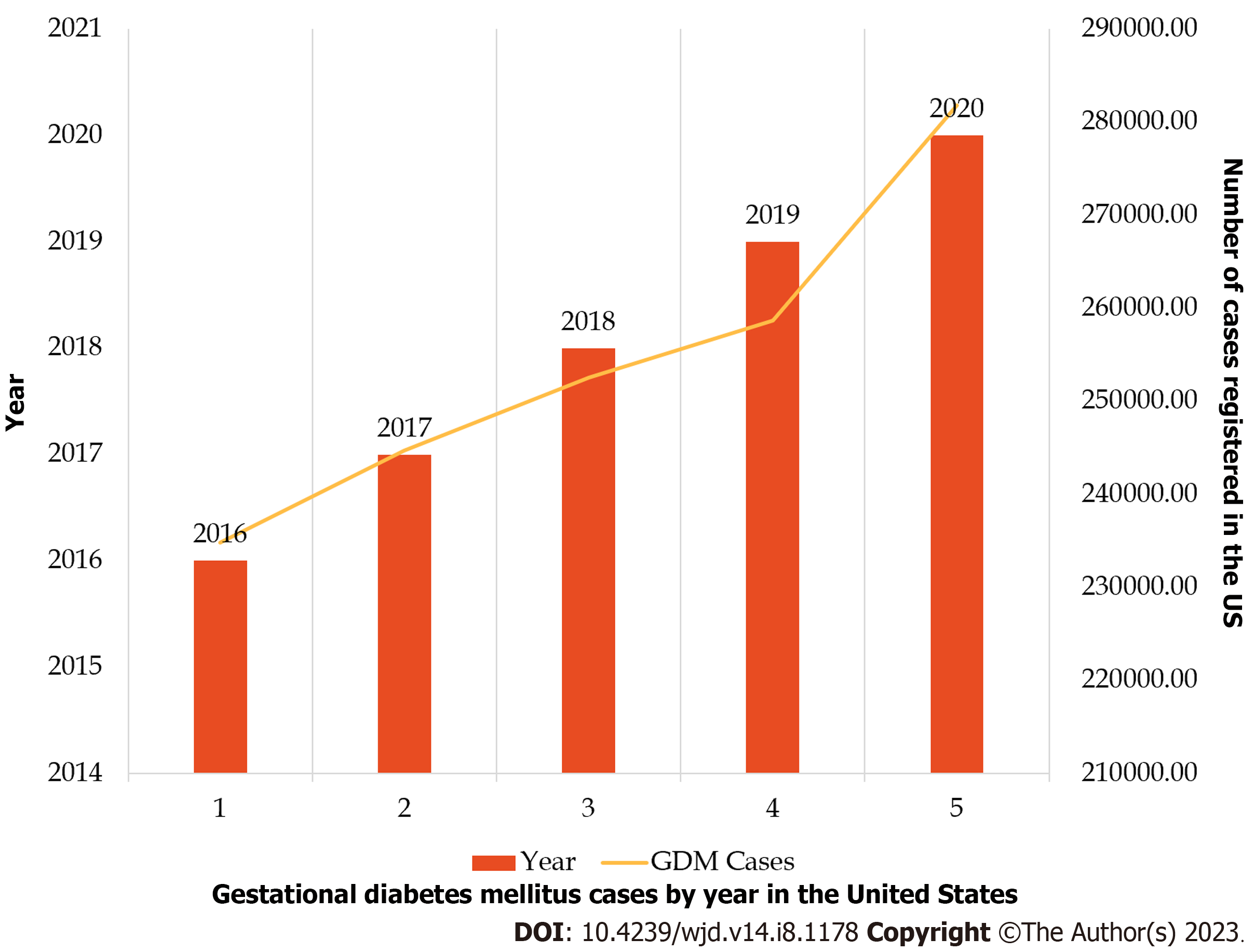Copyright
©The Author(s) 2023.
World J Diabetes. Aug 15, 2023; 14(8): 1178-1193
Published online Aug 15, 2023. doi: 10.4239/wjd.v14.i8.1178
Published online Aug 15, 2023. doi: 10.4239/wjd.v14.i8.1178
Figure 1 Pathogenesis of gestational diabetes mellitus.
This image provides an overview of the underlying mechanisms and processes involved in the development of gestational diabetes mellitus[109]. TNF: Tumor necrosis factor; IL: Interleukin; ATM: Adipose tissue macrophages.
Figure 2 Timeline of events of diagnostic guidelines for gestational diabetes mellitus.
The diagnostic criteria for gestational diabetes have evolved over time, with changes in fasting and post-challenge glucose thresholds. The criteria have become more standardized and sensitive in recent years, reflecting advancements in understanding the risks associated with elevated glucose levels during pregnancy. OGTT: Oral glucose tolerance test; GDM: Gestational diabetes mellitus; NDDG: National Diabetes Data Group; WHO: World Health Organization; IADPSG: International Association of the Diabetes and Pregnancy Study Groups; ADA: American Diabetes Association.
Figure 3 Linear trend of gestational diabetes mellitus trends and statistics from 2016 to 2020[49].
GDM: Gestational diabetes mellitus.
- Citation: Mendez Y, Alpuing Radilla LA, Delgadillo Chabolla LE, Castillo Cruz A, Luna J, Surani S. Gestational diabetes mellitus and COVID-19: The epidemic during the pandemic. World J Diabetes 2023; 14(8): 1178-1193
- URL: https://www.wjgnet.com/1948-9358/full/v14/i8/1178.htm
- DOI: https://dx.doi.org/10.4239/wjd.v14.i8.1178











